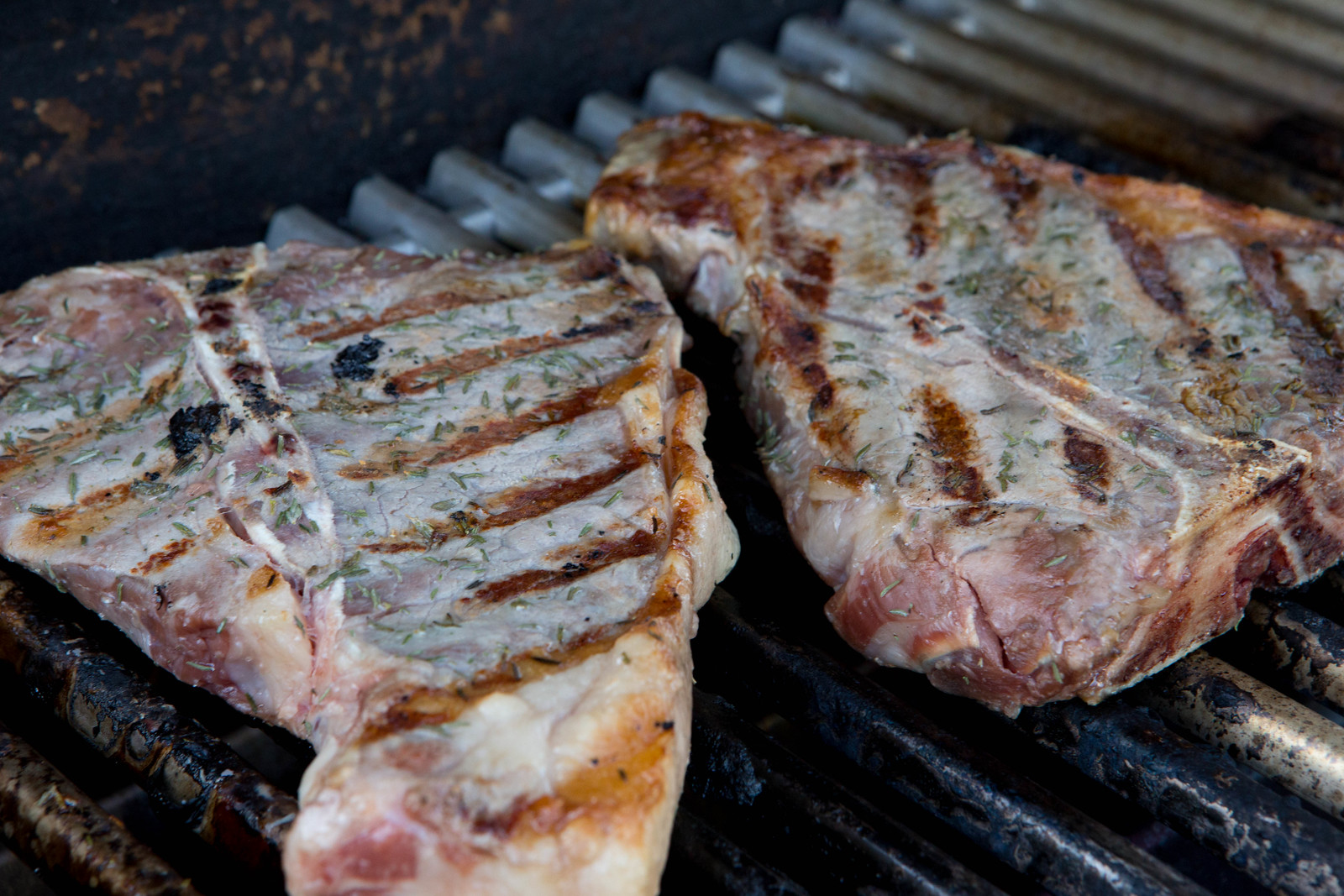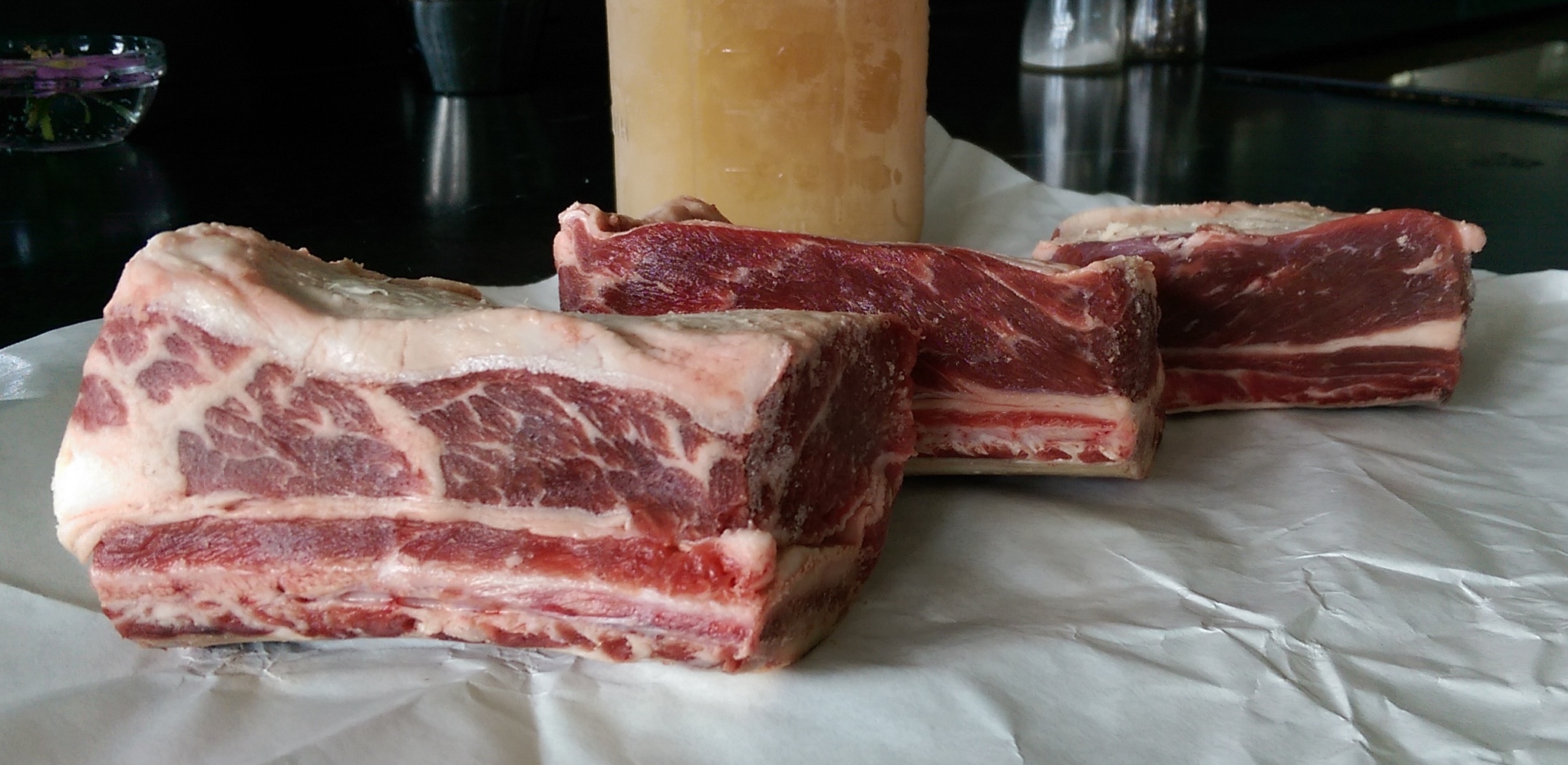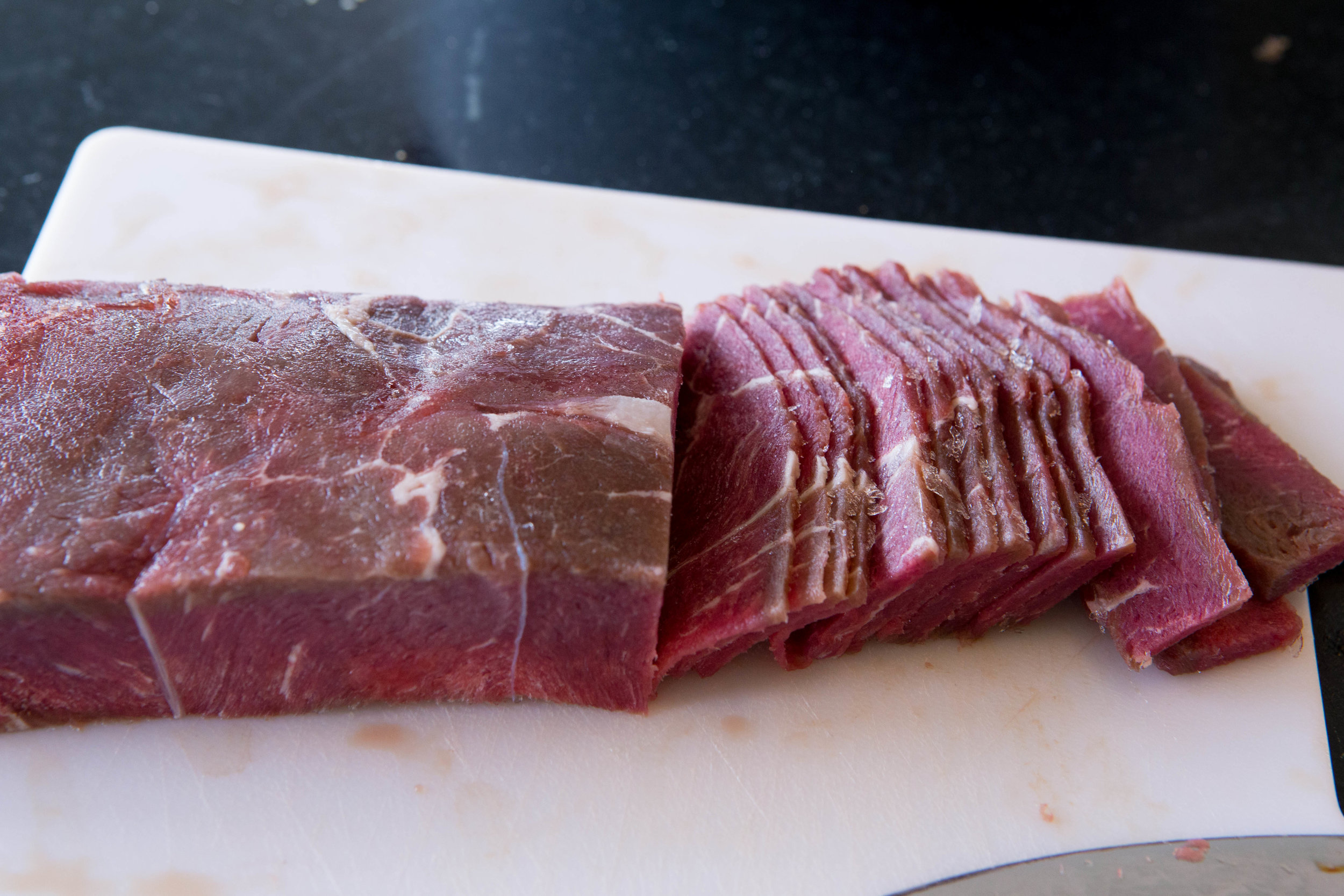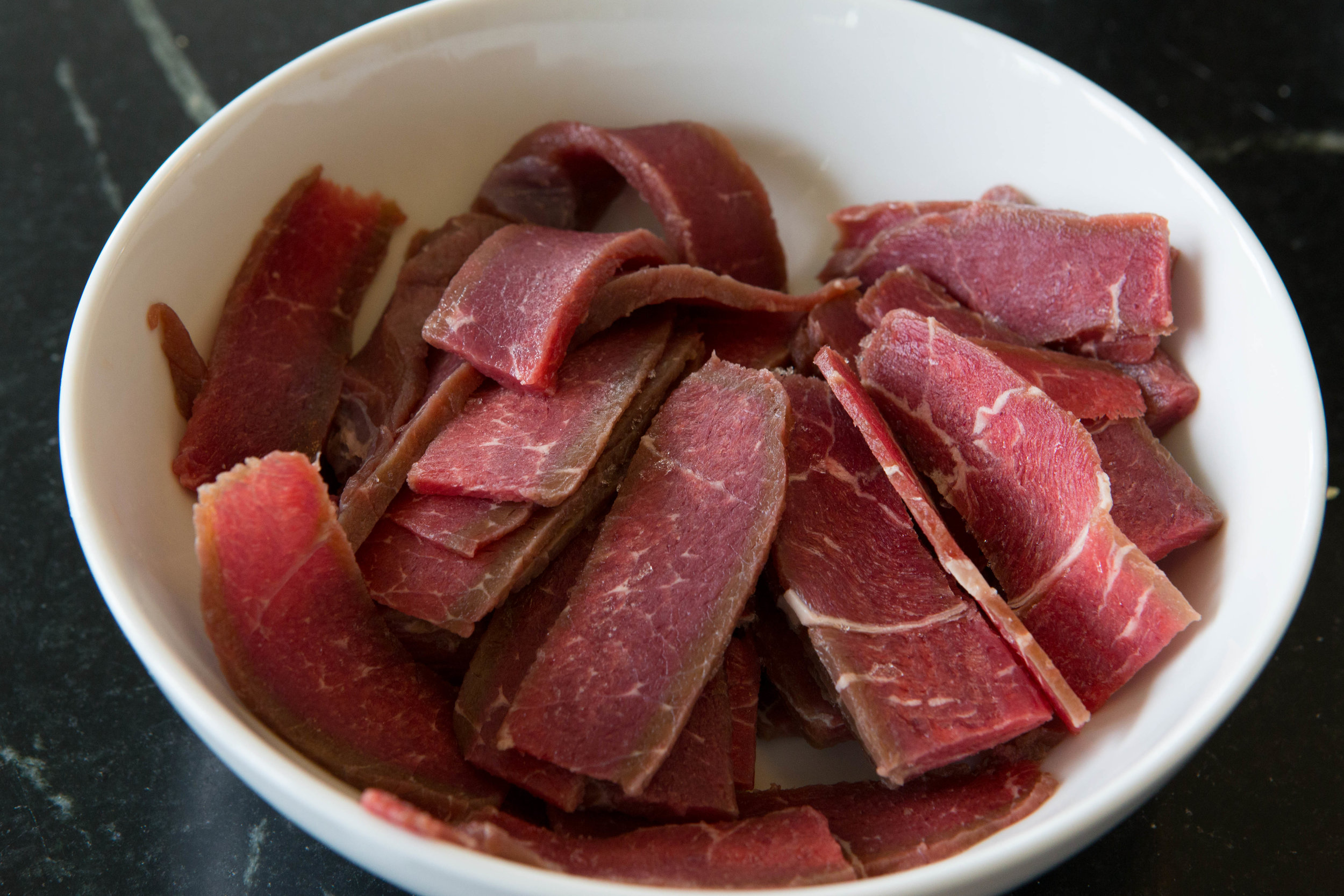Blueberries Everywhere
/We are enjoying ripening blueberries from our newly planted blueberry bushes! I already stripped most of the blueberries off the bushes to encourage first year growth.
You can subscribe to our blog....We promise, no spam!

We are enjoying ripening blueberries from our newly planted blueberry bushes! I already stripped most of the blueberries off the bushes to encourage first year growth.


In the midst of our heatwave, our mama cows are enjoying the luxurious cool mist from the water misters and a refreshing breeze from our industrial fans. At 8 months pregnant, our mama cows deserve some pampering in our 100 degree heat! The cows have access to our pastures and can come in to escape the heat and play in some fresh straw.


A few weeks ago, we started weaning last Fall’s calves from their moms. Under Michael’s watchful care, our calves and momma cows are weaned humanely with a temporary wire between them. The calves and momma cows can touch noses without the calves being able to nurse. They are also near each other for support as the calves adjust to eating only fresh grass and clover on pasture. After two days of some mooing back and forth, the quiet chewing returned to our pastures.
Some people wean their calves at 6 months. However, we prefer to wait until the calves are more mature at 8 months before we start weaning. We feel waiting and using a gentle weaning technique is less stressful and healthier for both calves and momma cows. Yes, us humans also benefit with better sleep from our gentle weaning process...less mooing and more chewing.

After a very wet and long winter/spring, the cows are thrilled to be back onto pasture. We are thrilled too. Michael's daily chore of scooping manure will be a distant memory as he gladly adjusts to managing the herd with intensive rotational grazing.
Our cattle are well-loved and cared for. They are docile and friendly. There's no shortage of individual attention for each of them. As you can see, this one loves getting her back scratched!
Others love posing for the camera! It's definitely a cow's life and fun one indeed.
There's something about the sight and smells of fresh blooms in the orchard that make the arrival of spring feel real!

Em Holding Azule
Always fun to have baby chicks on the farm. No matter how rainy and dreary the weather gets, holding a baby chick instantly brightens your mood. We have 8 Austrolorp chicks to add to our egg-laying flock. Not only do we and our egg customers look forward to farm fresh eggs with orange yolks, our cows also thank the chickens when they keep the fly population under control during the summer months. Our lucky chickens are out on pasture throughout the year. We all win!

Baby Chick (Ring) Wandering

Sustainability starts with soil conservation. We use a red clover as our covercrop for our raised bed vegetable garden. The red cover grows through the winter and preserves our soil from the 50+ inches per year of rain while also adding nitrogen into the soil. As a bonus, we improve the soil structure by incorporating the red clover into the soil.
Here are spring peas that were planted right after the red clover was incorporated.

If you didn't plant a covercrop last fall, there's still time to plant your garden this spring but you need to start planning NOW and planting SOON!
Here's a preview of another glorious strawberry season to come!


Spring (although very wet) has finally arrived, and our pastures are alive again! Our diverse pastures are the lifeblood of our farm. We have been planting, nurturing, and patiently watching the pastures throughout the fall and winter. Hacking through blackberry along the fence lines with a trail hoe and weeding tansy by hand is tough work but worth it. No chemicals needed here!

We no-till drilled tall fescue, red clover, annual clover, chicory, and plantain into our existing pastures last Fall and can see them emerging this spring. By no-till drilling, we save our existing pasture, reduce carbon loss in the soil, and preserve our earthworms and beneficial bacteria.

Why do we do all this? It’s for the love of our cattle and respect for our land and environment. Healthy, diverse pastures farmed organically help our land and environment by sequestering nitrates in our soil and converting the nutrients, sunlight and water into healthy, nutritious feed for our cattle. Our cattle help by grazing and depositing their manure throughout our pastures. We also harvest all the needed winter feed for our cattle from our pastures. It’s a continuous recycling process, and it’s pretty awesome!
Here's to the start of another great forage season! Please keep hunting our voles, Rudy!

The manure that we collect from our herd throughout the winter is more valuable to us than gold. Since we feed our herd organic forage which is grown by us, we know our herd's manure is clean and full of nutrients. We partnered with our friends at Yamhill Soil and Water Conservation District to receive partial funding to build our manure shelter last summer. The manure shelter prevents rain from leaching the nutrients in our manure pile and contaminating a creek that flows through our property. By keeping our manure pile dry, the composting process continues throughout our wet weather which has been substantial this winter. Once the manure is composted and the weather turns warmer, we spread the manure onto our pastures to fertilize them.
Rain water that comes in under the manure shelter and hits the manure pile is collected and pumped into our 275 gallon chubs. We store our manure water throughout the winter and spread onto our fruit trees in the spring.
We are happy with our new manure shelter and are excited that we can preserve and recycle the our herd's manure!
Sustainability is part of our DNA and can be seen throughout the farm. We spend extra time planning for sustainable practices and make them part of our everyday routine. We benefit. Our animals benefit. Our pastures benefit. Our environment benefits.
As the herd's lead shepherd, Michael sets up smaller paddocks with temporary electric lines within our larger pasture. He artfully moves the cattle into a new paddock every 2 days as part of our intensive rotational grazing program. The cattle benefit from fresh forage and encounter fewer pathogens. The pastures benefit from a more even mowing, a reinvigorating trampling, and even deposits of what we affectionately call black gold.
Emmett can be seen towing our portable chicken coop into a pasture just vacated by the cattle where the chickens free range and scavenge for bugs. By having the chickens nearby the cattle, the chickens keep the fly population naturally in check.
This is clearly a team effort, and I love my team!
Sustainability is an ongoing process. More examples of sustainability in my next installment.
Everyone has their own idea of the perfect burger. Every perfect burger starts with GREAT ground beef. Our ground beef comes from a single cow that is 100% grass-fed, organic, born and raised by us on our farm, and custom ground for us by our local butcher. Our butcher is only 10 miles away so our supply chain is very short and very local.
Our ground beef is frozen fresh in nicely formed blocks and pulls apart easily when thawed.
We like our ground beef with 15-20% fat. The fat on our 100% grass-fed beef melts away when seared which leaves a juicy but not greasy burger.
I like cooking my burgers on a nice hot grill for a uniform sear on both sides. There's no need to oil or grease your grill.
Also, don't forget to let that cheddar cheese melt all over that burger patty.
We are here to help our customers before and after they purchase their beef.
Enjoy!
A few pictures from one of our passionate and talented beef customers using the method of sous vide to cook our beef. Awesome job Megan and Adam! #organic #100percentgrassfed #sustainable
100% Grass-Fed. Pasture Raised. Organic. Sustainable.
We are passionate about the taste, marbling, and premium quality of our 100% grass-fed beef. Our cattle are known for their high marbling on a grass diet and their happy, docile personalities. We raise our happy cattle on our pastures that are high in diversity and nutrients. No GMOs, growth hormones, antibiotics, synthetics, herbicides, or pesticides of any kind.
The result . . . flavorful, tender, highly marbled beef with the health benefits of being 100% grass-fed, organic, and pasture raised.







Big THANK YOU to our loyal customers and friends for supporting our small family farm and our back-to-basics values. Your purchases, photos, and comments are much appreciated! We will soon start taking orders for our 2017 beef season. Contact us to be put on our interest list. Thanks to your support, we expect to sell out quickly again this year.
Your humble farmers,
Rich, Michael, and Emily
A hearty congratulations to Michael (and his coaches/teachers Adrienne and Alex) for a successful breeding season. All 8 of our mamma cows and our new replacement heifer are bred. Michael's watchful eye and our dedicated team willing to perform late night/early morning inseminations often in icy conditions were instrumental to our success.
Calving season starts in the beginning of August when we welcome our newest additions to the farm. To produce our highly marbled organic beef raised only on grass, we select genetics optimized for grass-fed diet and grow our organic pastures of grasses, legumes and forbes. I'll be sure to include photos of our finished beef in my next post.
Our strawberry jam is the perfect cure for the winter time blues. The main ingredient is our organic Seascape strawberries which we harvested this summer at their peak flavor and sweetness. Made at our farm house in small batches using a lot more sweet strawberries than organic sugar, you can really taste those sweet, fragrant berries.
We are offering pint jars (16 ounces) for $9. We can drop off the jam to you in McMinnville, or better yet, you can come over to pick up your jam and visit the farm.
Even in the middle of our wet winters, our cattle lead great lives. They get to scratch and scrub themselves at a couple of different brush stations, hang out with each other, get scratched and brushed by us, and be entertained while watching Michael clean.
And clean Michael does! During the winter months, Michael cleans the manure off the concrete EVERY day. They also get fresh straw bedding with a warm, dry place to sleep. Yes, our cattle are very spoiled.
Today is a deep cleaning day which happens once a week. Everything gets scrubbed down and washed out. All the feeders, railings, chutes, water troughs, mineral feeders, and concrete surfaces get scrubbed, washed, and scrubbed some more.
When we give tours of the farm, our visitors are impressed by the level of cleanliness and the care we give our cattle. Michael makes it look easy, but he spends many hours each day giving them fresh straw, clean water, and a clean environment. The cattle appreciate it, our family appreciates it, and now you can appreciate it too. THANK YOU, Michael!
As for me, my job is easy. I feed the cattle out in a clean environment and sit back and watch them enjoy their tasty feed. Once we let them into the cleaned feeding area, Michael goes back to work and cleans the next area.
-Rich
The first snowfall of the season always seems fun and magical. But the realities of frigid weather can become tiresome when you have livestock under your care. Cleaning out frozen manure stuck to the concrete, keeping the water troughs from icing over for the cattle and chickens, getting the tractor started on nights in the teens to feed out the cattle are some examples of quick chores that can take half a day to get done when everything freezes.
Ahhh....but the rewards of seeing those cute calves frolicking in the snow or those thankful cows giving you a gentle lick will melt the most frozen of hearts! I always groan a little in the evening when I leave our warm house with the fire crackling in the stove to feed out the cattle. After feeding them, I'm always reinvigorated and am sometimes fortunate to walk back to the house under a dark clear sky blanketed with thousands of twinkling stars. Life is magnificent on the farm, and you're always welcomed to join me for my evening cattle feedings.
Rich
Ps- The snow angel in the picture below is made by Emmett.
We readily admit that our cattle are spoiled and pampered. With our winters cold and wet, we make sure that they always have access to dry shelter with clean bedding and plenty of nutritious haylage to eat.
With the help of my tenacious son (Emmett), feeding out the cattle with the snow blowing sideways was delightfully fun. Working as a team, we cleared out the old feed and broke open those 1,400 pound frozen haylage bales. We even convinced our farm dog, Rudy, to help. The tractor was pre-warmed and started easily to help us handle those heavy bales which is always a good sign.
The cattle were grateful for the feed and showed their appreciation by their loud chewing at the feeder. Even the calves were covered in snow and loving it (photo credit goes to Emmett)! There is never a shortage of pets and scratches behind the ears for our cattle.
Even with machinery to help with the heavy lifting, there's always enough manual labor to keep us connected to our livestock and land. My face was ready to fall off from the freezing wind, but I was warm and dry under my jacket and gloves.
Rich
The serenity of snow. It's a calming force once it's here. The farm becomes quiet as the animals adjust and us farmers take a break from our daily chores to enjoy the change.
We spent the day preparing for the freezing rain that is supposed to arrive tomorrow. The chickens were snuggled into their coop with enough feed and water to last a few days in case they choose not to come out. The cattle were rewarded with a thicker layer of fresh bedding. They show their appreciation with their boisterous play.
Our spinach has been thriving so far and will hopefully survive this freeze under their tunnel. There's nothing like fresh spinach during winter months.
After a long day, we are spending this cold evening in front of the fire. Rudy, our energetic farm dog, has the right idea! Wishing you the warmest wishes!
-Rich
Colder nights and shorter days mark the end of our traditional garden season. This year, I'm trying a caterpillar tunnel which consists of hoops covered by clear plastic and held down by rope. Using a hoop bender, I created 6 foot hoops from 10 foot sections of metal tubing. With the caterpillar tunnel over my raised bed, I'm hopeful that my spinach season will be extended into winter and that I will get some frost protection.
I can lift up a side to harvest or ventilate during hot weather.
I can also lift up both sides when the weather gets too hot. With our upcoming cold snap dipping into the mid 30s at night, I doubt too much heat will be a problem!
Marching forward,
Rich
Our Recent Blog Posts